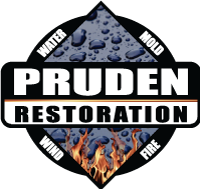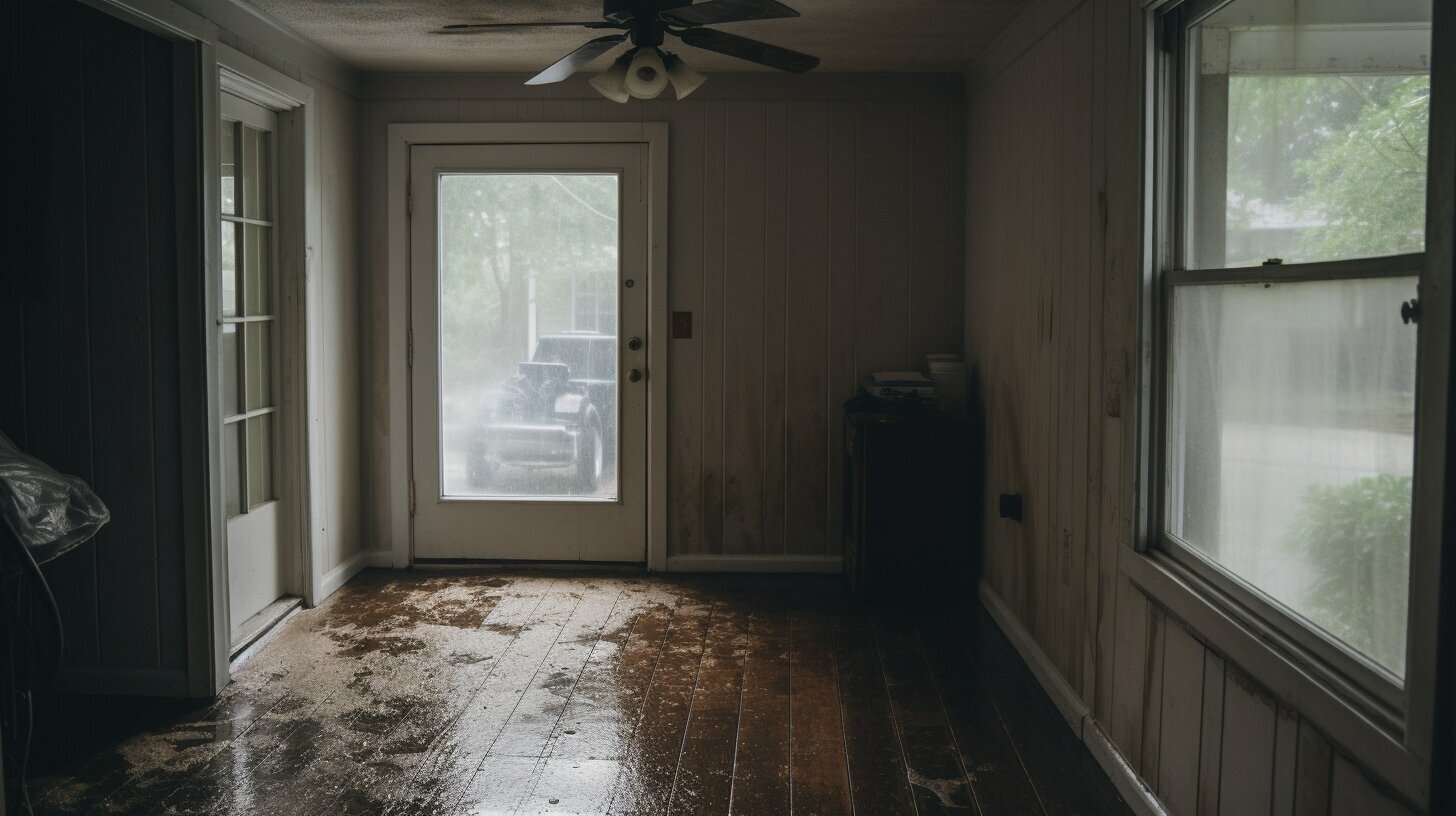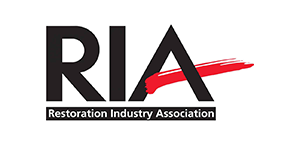Water damage in your walls can have significant consequences for your home’s structure and indoor air quality. When water seeps into your walls, it can lead to various signs of water damage. These signs include stains on your walls or ceilings, peeling or flaking paint, soft or warping drywall, the sound of running water, increased water bills, musty odors, and visible mold.
To prevent further damage and ensure the health and safety of your home, it is crucial to address water damage promptly. This involves identifying and repairing the source of the leak and treating the damaged drywall and excess moisture. Depending on the extent of the damage, you may need to replace damaged drywall and insulation.
Repairing water-damaged drywall typically involves cutting out the affected area, fitting a drywall patch, and applying joint compound and paint. It is essential to thoroughly dry out the affected wall before making repairs to prevent the growth of mold.
If the water damage is extensive or there are signs of black mold, it is advisable to seek professional assistance. Hiring a contractor who specializes in repair and remediation can ensure a thorough and effective restoration process.
Key Takeaways:
- Water damage in walls can lead to stains, peeling paint, warping drywall, musty odors, and mold growth.
- Address water damage promptly to prevent further structural damage and indoor air quality issues.
- Call a professional plumber to locate and repair the source of the leak.
- A water mitigation company can assess and treat the damaged drywall and excess moisture.
- Depending on the extent of the damage, you may need to replace damaged drywall and insulation.
How to Prevent and Repair Water Damage in Walls
To prevent and repair water damage in your walls, there are several proactive measures you can take and effective remedies to implement.
Prevention:
1. Waterproofing Walls: Applying a waterproof sealant to your walls can help prevent water infiltration. Ensure that all cracks and gaps are properly sealed, especially near windows, doors, and plumbing fixtures.
2. Regular Inspections: Regularly inspect your walls for any signs of water damage, such as stains, peeling paint, or soft spots. Pay attention to areas prone to water exposure, such as bathrooms, kitchens, and basements.
3. Proper Ventilation: Good ventilation is essential in preventing moisture buildup. Install exhaust fans in bathrooms and kitchens, and make sure they are properly vented to the outside. Keep windows and doors well-sealed to prevent condensation.
Repair:
1. Locating the Leak: If you notice any signs of water damage, the first step is to locate and fix the source of the leak. This may require the expertise of a plumber or a water damage restoration professional.
2. Drying Out the Area: After fixing the leak, it’s crucial to dry out the affected area thoroughly. Use fans, dehumidifiers, or specialized drying equipment to remove excess moisture. This helps prevent mold growth and further damage to the walls.
3. Repairing Damaged Materials: Depending on the extent of the water damage, you may need to replace damaged drywall, insulation, or other materials. Cut out the damaged area, fit a drywall patch, and apply joint compound and paint to restore the wall’s appearance.
| Prevention | Repair |
|---|---|
| • Waterproofing walls | • Locating the leak |
| • Regular inspections | • Drying out the area |
| • Proper ventilation | • Repairing damaged materials |
By following these preventive measures and promptly addressing any water damage, you can protect your walls from further harm and maintain a safe and dry living environment.
Conclusion
Water damage in your walls can lead to serious issues, but by being vigilant, taking preventive measures, and addressing any damage promptly, you can protect your home and maintain its integrity. When water gets into your walls, it can cause various signs of water damage. The first sign is usually a stain on your walls or ceilings, which can be light-brown or beige spots. You may also notice peeling or flaking paint caused by excess moisture. Soft or warping drywall is another indicator of water damage, as it can swell, sag, or become deformed. Other signs include the sound of running water, an increase in your water bill, musty smells, and visible mold.
It’s important to address water damage promptly to prevent further damage, such as the growth of mold and structural issues. You may need to call a plumber to locate and repair the source of the leak, and a water mitigation company to assess and treat the damaged drywall and excess moisture. Depending on the extent of the damage, you may need to replace damaged drywall and insulation.
Repairing water-damaged drywall involves cutting out the damaged area, fitting a drywall patch, and applying joint compound and paint. It’s crucial to fully dry out the affected wall before making repairs to prevent mold growth. If the damage is extensive or if there are signs of black mold, it is recommended to hire a professional contractor for repair and remediation.
Water damage in your walls should not be taken lightly. By being proactive in preventing water infiltration and addressing any signs of damage promptly, you can safeguard your home and avoid costly repairs down the line. Remember to keep an eye out for signs of water damage, such as stains, peeling paint, and warping drywall, and take immediate action to mitigate any issues. With the right preventive measures and timely repairs, you can protect your home and maintain its structural integrity for years to come.
FAQ
What are the signs of water damage in walls?
The signs of water damage in walls include stains on walls or ceilings, peeling or flaking paint, soft or warping drywall, the sound of running water, an increase in water bill, musty smells, and visible mold.
How can I address water damage in my walls?
It is important to address water damage promptly to prevent further damage. You may need to call a plumber to locate and repair the source of the leak. Additionally, a water mitigation company can assess and treat the damaged drywall and excess moisture. Depending on the extent of the damage, you may need to replace damaged drywall and insulation.
How do I repair water-damaged drywall?
Repairing water-damaged drywall involves cutting out the damaged area, fitting a drywall patch, and applying joint compound and paint. It is crucial to fully dry out the affected wall before making repairs to prevent mold growth. If the damage is extensive or if there are signs of black mold, it is recommended to hire a professional contractor for repair and remediation.
How can I prevent water damage in my walls?
To prevent water damage in walls, ensure proper waterproofing techniques are applied during construction or renovation. Regularly check for leaks and address them promptly. Maintain proper ventilation in bathrooms and kitchens to reduce excess moisture. Monitor your water bill for any sudden spikes that may indicate a leak. Consider installing a water leak detection system for added protection.
Do I need professional assistance for water damage in walls?
While minor water damage can sometimes be addressed on your own, professional assistance is recommended for more extensive or mold-related damage. Professionals can accurately assess the extent of the damage, locate and repair the source of the leak, and ensure thorough drying and remediation to prevent further issues.










